Here’s Your Eclipse Q & A
On August 21, 2017, we’ll have the first total solar eclipse to touch the continental United States in almost 40 years. To help you prepare for the eclipse, I’ve teamed up with eclipse expert Xavier Jubier and Germinate LLC to produce an easy-to-use and totally free app that will tell you everything you need to know about the eclipse, including details of the eclipse (including exact times) for any location and info screens and videos about eclipses in general. Simply download the free app by searching for “Totality by Big Kid Science” (click to see a preview video and links to the app stores). And for a quick synopsis, read the Q&A below.
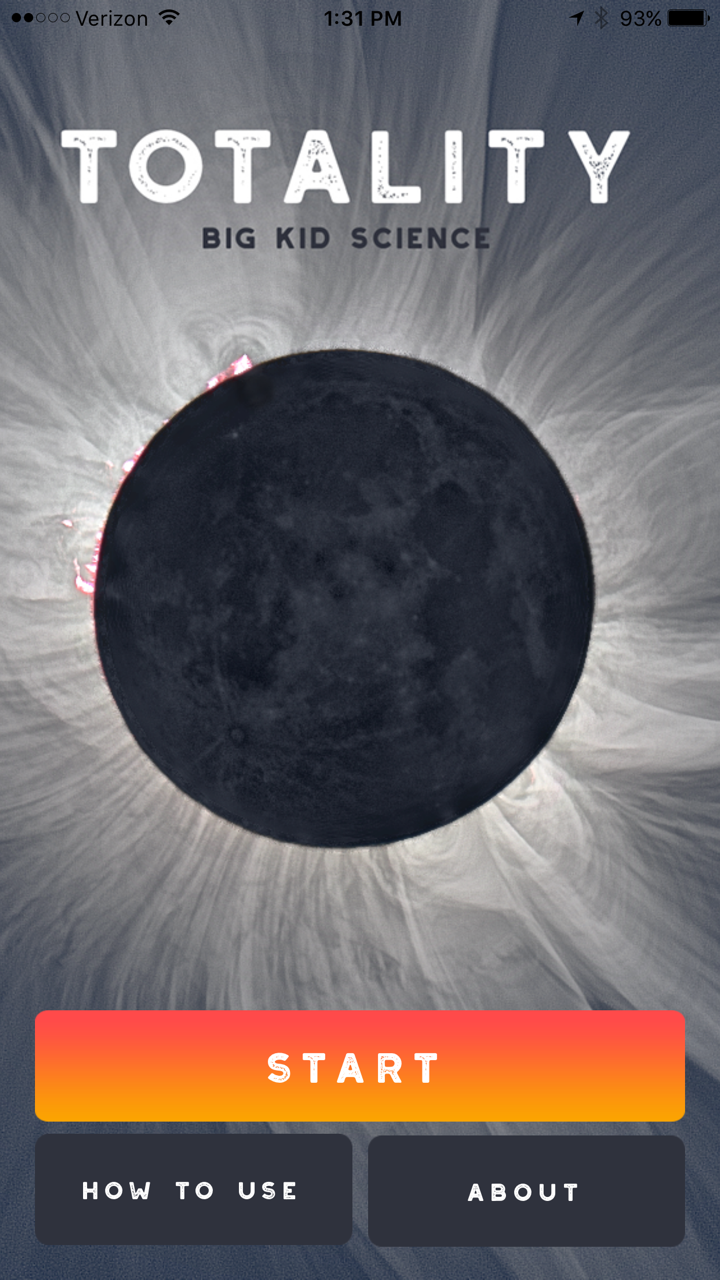
Opening screen for Totality by Big Kid Science. Click Start for the main map, or How to Use or About for more info.
Q: Why don’t I want to miss the eclipse?
A: Imagine the day suddenly turning into night, even while the Sun is still high in the sky. For most of human history, such an event — a total solar eclipse — would have surely been frightening. Today, however, we can predict the exact times and locations of total solar eclipses centuries in advance, which means there’s no more fear, just an awe-inspiring spectacle of nature. For more, view the video you’ll find here, which you can also find in the Totality by Big Kid Science app by tapping Main Menu (in upper left) —> Learn —> Eclipse 2017.
Q: Where can I see it?
A: The entire continental United States (in fact, all of North America and parts of South America) will see a partial solar eclipse on August 21, which is certainly worth witnessing. But it’s even cooler (by far!) to see totality, because day will literally turn into night, with planets and bright stars visible in the sky. To see totality, you must be on the narrow, coast-to-coast path shown on the map below from the Totality by Big Kid Science app. Use the app to find out what you’ll see in your current location, or to plan a trip to the path of totality.
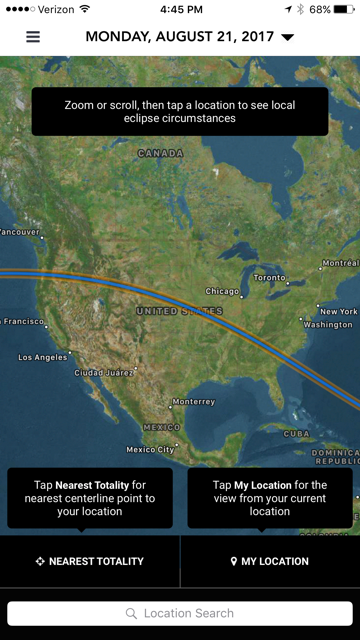
Main map in app. Use the triangle next to date at top to select maps for other future eclipses.
Q: What time will the eclipse occur on August 21?
A: It depends on where you are located, so use the Totality by Big Kid Science app to get the exact times, as shown in the sample app screen below.
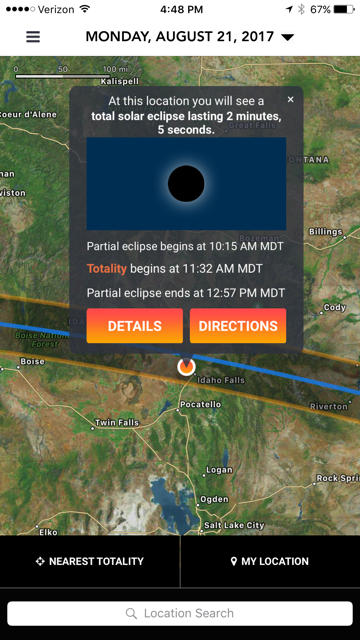
Select a location to see eclipse information. You can choose My Location to use your current GPS location, or Nearest Totality to find the nearest location to you that is on the centerline of the path of totality. Tap Details for additional information or Directions to open map software for driving to your selected location.
Q: How do I view the eclipse safely?
A: Just as you would not look directly at the Sun on any normal day, you must not look directly at the Sun on eclipse day, either. However, there are several ways to observe the eclipse safely. The easiest is pinhole projection, in which you simply project an image of the Sun through a hole in a sheet of cardboard or stiff paper; you’ll find instructions and other options within the app by tapping Main Menu (in upper left) —> Learn —> Safe Viewing. But it’s much more fun to be able to look up at the Sun, which is possible if you use special eclipse glasses, like the ones worn by children in the photo below from the great organization Astronomers Without Borders.
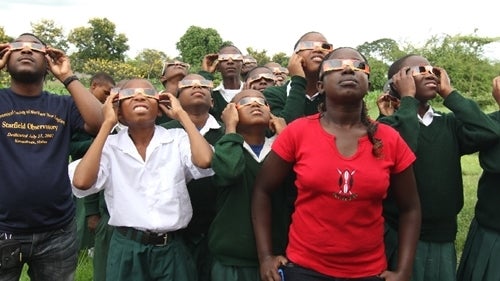
Students wearing eclipse glasses. You must wear these special glasses to look at the Sun during a solar eclipse safely. Exception: you can (and should) remove them during totality.
Q: Where can I get eclipse glasses?
A: Be sure you get certified eclipse glasses, which are the only safe option. They are available from many vendors, though supplies are dwindling as the eclipse approaches. One option is to purchase them from within the Totality by Big Kid Science app (tap Main Menu (in upper left) —> Shop) or from bigkidscience.com/eclipse/shop.
Q: OK, I know what I can see and when, and I’ve got my eclipse glasses; what else do I need to do?
A: Go outside! As long as the Sun is not blocked by clouds or obstacles (like buildings or trees), you can see the eclipse simply by looking up at the Sun with your eclipse glasses. But it’s generally more fun to watch with a group, so look for events in the area where you’ll be watching. Some of you may also wish to consider joining these great events in Idaho Falls, ID, where I’ll be speaking along with astronaut Alvin Drew, and University of Colorado Professors Nick Schneider and Dr. Erica Ellingson.
Q: I live just a few hours drive from the path of totality. Can I just get up early and drive there on eclipse day?
A: In principle, yes, but... Expect traffic to be extremely heavy with millions of people having the same idea. So if you decide to do this, get up very early and look for roads that are less likely to be congested. Still, to be sure you don't miss out, consider driving to the path at least a day or two ahead of time. While lodging is difficult to find right on the path, you may still be able to find camp sites, or lodging that is close enough to the path to make it a much easier drive on eclipse day, Aug. 21. Note: Be sure to stock your car with food and water and make sure you have a full tank of gas, in case gas stations and stores/restaurants run short of supplies for all the people heading to the path of totality.
Q: I’ve got kids; are there any activities I can do with them?
A: Yes! You’ll find a great set within the Totality by Big Kid Science app by tapping Main Menu (in upper left) —> Learn —> Classroom Activities. These activities are also posted here.
Q: If I miss this eclipse, when’s my next opportunity?
A: The next total solar eclipse to touch the continental United States will be on April 8, 2024. In between there are four other total solar eclipses that will occur in other parts of the world. Use the triangle at the top of the main map screen in the Totality by Big Kid Science app to see the paths and get details for all five of these future eclipses.
Q: I want to understand the eclipse; are there resources for that?
A: Yes! There a far too many resources to list here, but I’ll suggest two starting points:
- Study the information available within the Totality by Big Kid Science app by tapping Main Menu (in upper left) —> Learn and exploring the various screens.
- Read this more detailed article that I’ve written for the newly reborn Popular Astronomy magazine.
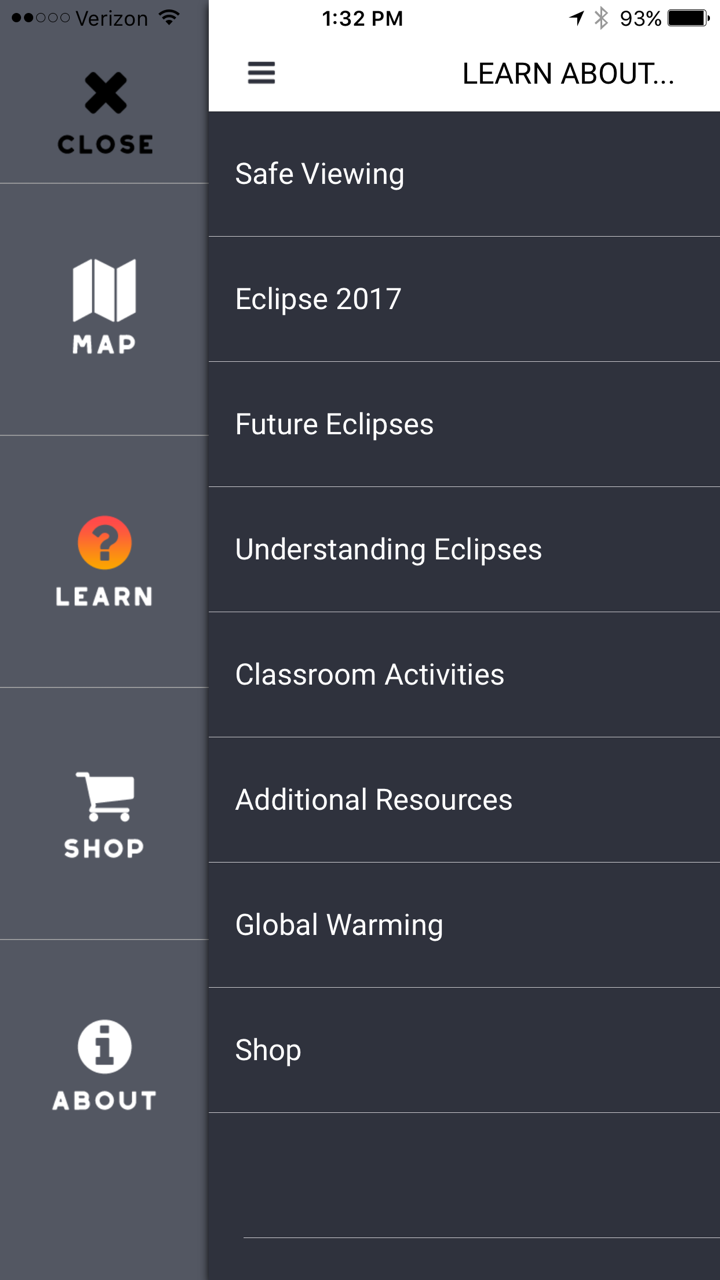
Tapping the main menu in the upper left corner of the Totality by Big Kid Science app brings up the four options at left; then tapping Learn brings up the links to the educational screens listed at right. You can always go back to the map by tapping the X for close or Map.
Q: I love that the app is totally free; how can I show my support?
A:
- Please tell your friends about it.
- Rate or review it in the app store.
- Make a donation to one of my favorite space education nonprofits; you’ll find links on the Shop and About screens. Or just go here and donate to Story Time From Space. Thanks!

Japanese astronaut Koichi Wakata reads The Wizard Who Saved the World from the International Space Station for the Story Time From Space program.
Credits: The Totality by Big Kid Science app was created and funded as a public service to science education by Big Kid Science author Jeffrey Bennett, based on eclipse code provided by Xavier Jubier and with app development by Germinate LLC. Dr. Bennett also donated more than 100,000 pairs of eclipse glasses for school children, including 50,000 pairs sent to underserved schools through Astronomers Without Borders, 20,000 pairs to Denver Public Schools, and 22,000 pairs to Idaho Falls public schools.